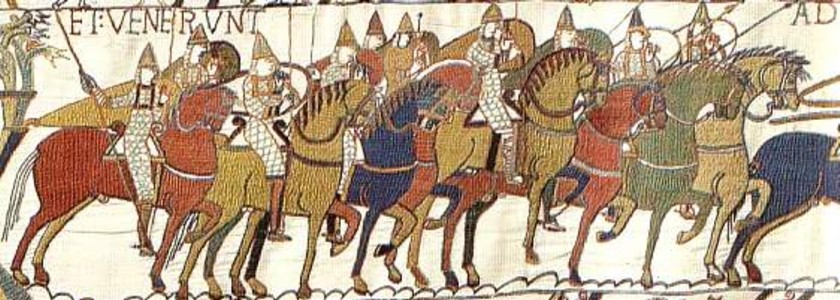I've played out the battle of Hastings c. a couple of dozen times as a miniature wargame simulation.
I've played out the battle of Hastings c. a couple of dozen times as a miniature wargame simulation.

Shortly after William the Conqueror won the battle of Hastings, the Bayeux Tapestry was created to teach the (politically correct) Anglo-Norman view of why the Norman conquest had to happen.
A rather detailed and lengthy monograph is offered below (with notes and my sources). Covered are: the main historical elements and events that set the stage for the battle of Hastings and Norman conquest: an examination of potential and realistic army strengths: orders of battle provided, including a breakdown into troop types for wargaming.
As the subheading of this site suggests, my focus upon the battle of Hastings is from a wargamer's perspective: that is, the details of the battle are checked and either refuted or corroborated through "play-testing" the battle of Hastings in miniature. For those interested specifically in the wargame aspects, a shortcut is the Wargame appendix.

|
To access the complete monograph (including the wargame appendix), which is in three parts, click on king Edward the Confessor for part one: click on king Harold II to open part two: click on king William I the "Conqueror" for part three.
|
Three refights of the battle of Hastings as a miniatures wargame: photos and narrative (using The Art of War wargame rules)
Maps of the battle of Hastings Calendar of events for the year 1066 Viking battles according to the Anglo-Saxon Chronicle 1066 the Year of Battle: Wargame the entire campaign Tom Lovell's painting of the battle of Hastings ARE YOU (as nifty as) WILLIAM THE CONQUEROR? Play this interactive "adventure" and find out. Bayeux Tapestry, primary source for the battle of Hastings and William the Conqueror
|
Last updated on 5 May 2025